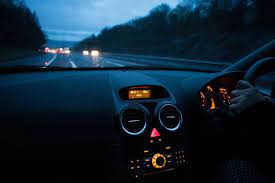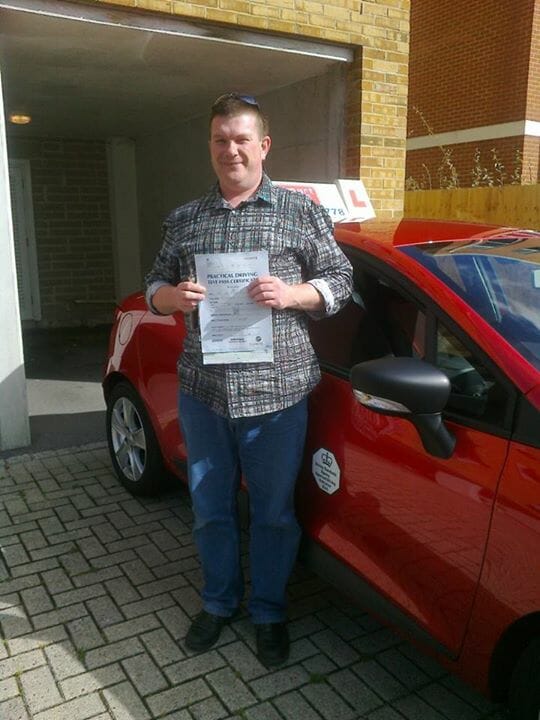
1. How can you prepare your car for night driving?
To ensure a safe night drive, it’s important to prepare your car properly. Start by checking your headlights and ensuring they’re clean and working correctly. Adjusting your mirrors is also crucial for a clear view of the road behind you. Keep a safe distance from other vehicles and slow down in bad weather conditions. Stay alert and focused, avoiding distractions like mobile phones or eating while driving at night. Take breaks if necessary, and plan ahead for emergencies by carrying an emergency kit including items like flashlights and blankets. Remember to wear your seatbelt at all times, and don’t drink alcohol or use drugs before driving. Keep windows clean inside and out, get regular eye check ups, and follow lane markings carefully, especially during construction zones where lanes may shift unexpectedly. By following these tips, you’ll be well-prepared for any night time driving situation.
2. What are the best ways to adjust your eyes for night driving?
To adjust your eyes for night driving, start by cleaning your windshield and mirrors to reduce glare. Make sure your headlights are clean and functioning properly. Adjust the brightness of your dashboard lights to reduce eye strain. Use the night mode setting on your GPS or Sat Nav to reduce screen brightness. Avoid looking directly at oncoming headlights and instead focus slightly to the side of the road. Take frequent breaks to rest your eyes and stay alert. Finally, get regular eye checkups to ensure you have optimal vision for driving at night. By following these steps, you can reduce eye strain and improve visibility while driving in low light conditions.
3. Why is it important to avoid looking directly at oncoming headlights?
Direct eye contact with oncoming headlights can cause temporary blindness, making it difficult to see the road ahead. This can be especially dangerous when driving at night, as visibility is already limited. To avoid this, it’s important to look slightly to the side of the road when facing oncoming traffic. This will help prevent your eyes from being dazzled by the bright lights and allow you to maintain a clear view of the road ahead. Remember, safety should always be your top priority when driving, and taking simple precautions like this can make all the difference in keeping you and other drivers safe on the road at night.
4. How can you reduce distractions while driving at night?
To reduce distractions while driving at night, keep your focus on the road ahead. Avoid using your phone or eating while driving, and turn off any interior lights that may cause distraction. Keep your music volume low enough to hear sounds outside of the car clearly, such as sirens or honking horns. If possible, have a passenger navigate for you, or use a GPS navigation system to avoid getting lost or distracted by looking at maps. Remember to stay alert and focused, and always keep both hands on the wheel. By minimizing distractions, you can help ensure that you arrive at your destination safely.
5. What are some tips for navigating unfamiliar roads in the dark?
Navigating unfamiliar roads in the dark can be a daunting task. To stay safe, plan your route beforehand and use GPS navigation systems if possible. However, don’t rely solely on them – always double-check maps beforehand too! Be cautious near intersections where visibility might be limited due to buildings or trees blocking streetlights etc. Reduce speed when approaching curves or bends in roads since visibility decreases rapidly here too! Try not to overtake unless absolutely necessary. Remember to keep a safe distance from other vehicles, maintain focus and avoid distractions while driving at night. By taking these precautions, you can navigate unfamiliar roads with confidence and arrive at your destination safely.
6. Why should you maintain a safe following distance when driving at night?
Maintaining a safe following distance when driving at night is crucial to avoid accidents. With reduced visibility, it’s essential to have enough space between you and the vehicle in front of you to allow for sudden stops or turns. A greater following distance than usual is recommended to ensure you have enough time to react to any unexpected situations. Additionally, keeping a safe distance can reduce the risk of being blinded by the headlights of the car in front of you. Remember, it’s always better to be safe than sorry, so maintain a safe following distance and stay alert at all times while driving at night.
7. How can you stay alert and focused during long night time drives?
When driving at night, staying alert and focused is crucial for your safety. To stay alert during long night time drives, avoid distractions such as using mobile phones or eating while driving. Keep both hands on the wheel and eyes on the road ahead at all times. Take regular breaks every two hours or so to rest and refresh yourself before continuing your journey safely. If you feel drowsy or tired while driving at night, pull over to a safe spot and take a nap or stretch your legs. Open windows to ensure fresh air circulation and keep the heating to a lower temperature. Keep the music volume low enough to hear sounds outside the car clearly, such as sirens and horns honking. By following these tips, you can ensure that you stay alert and focused during long night time drives, reducing your risk of accidents and arriving safely at your destination.
8. What should you do if you start feeling drowsy while behind the wheel at night?
Feeling drowsy while driving at night can be dangerous. If you find yourself struggling to stay awake, the best thing to do is to take a break and rest. Pull over at a safe location, get out of the car, and stretch your legs. Drink some water or energy beverages to help you stay alert. If possible, take a quick nap or switch drivers if you have someone else in the car with you. Don’t rely on opening windows or turning up the radio volume to keep you awake – these methods are not effective in combating fatigue. Remember, it’s better to arrive late than not arrive at all. Stay safe by prioritizing rest and staying alert while driving at night.



